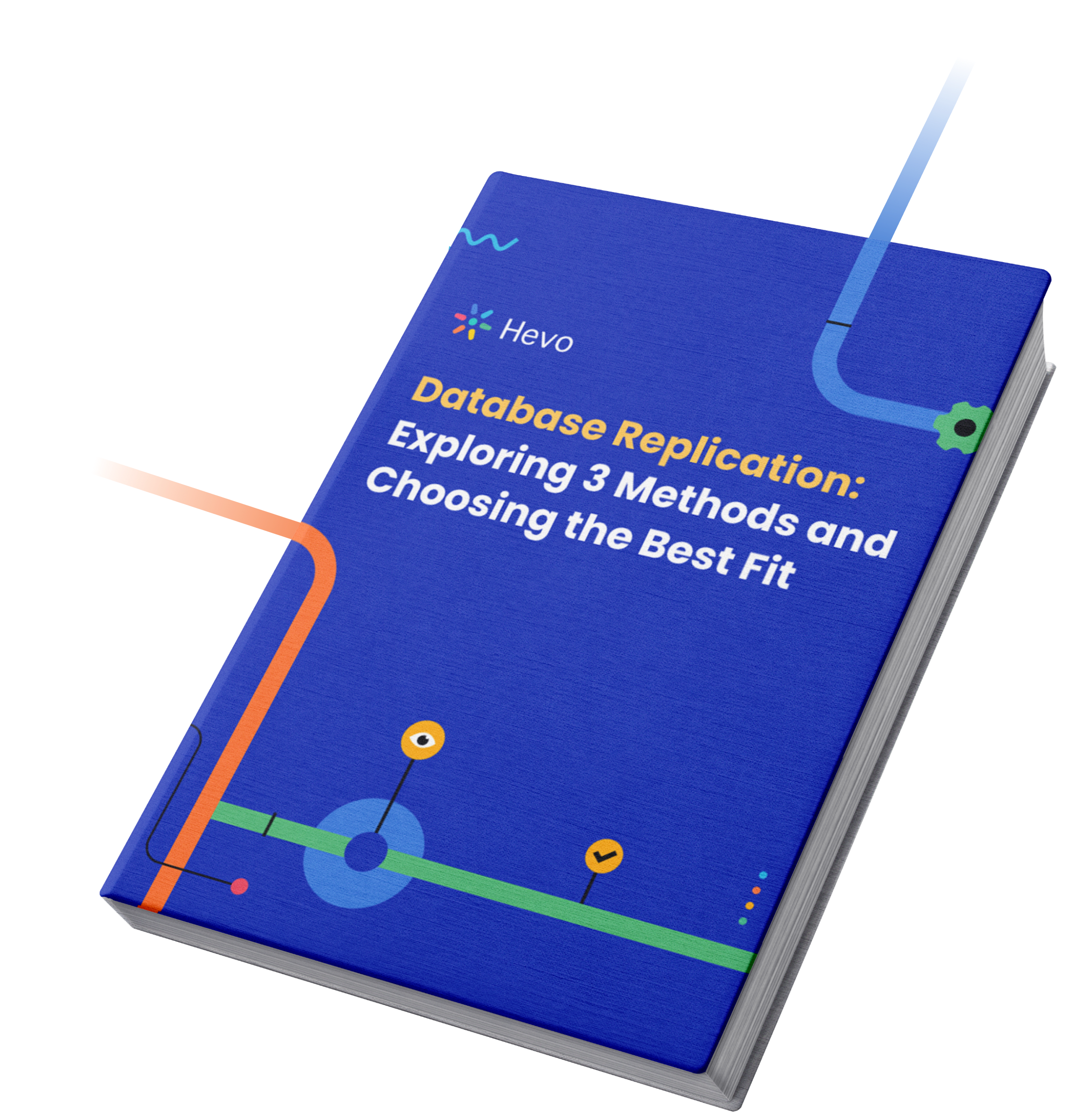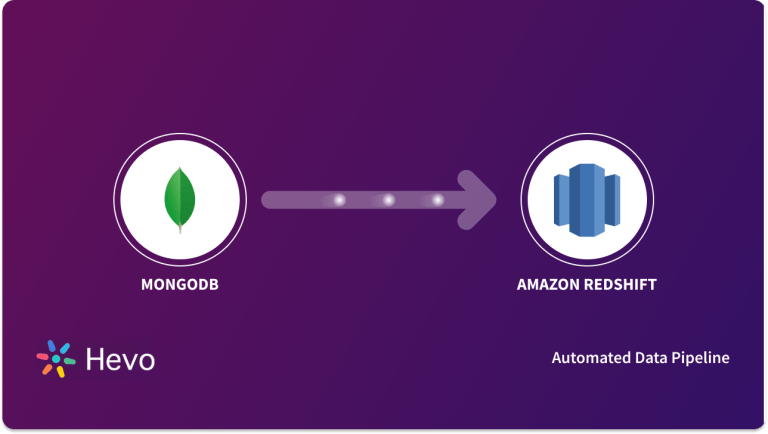Are you facing difficulties with your daily MongoDB data exports? Do you find it grueling to perform all the work? Well, look no further! This article will answer all your queries & relieve you of the stress of finding a truly efficient solution. Follow our easy step-by-step solution to help you master the skill to efficiently export your data from a MongoDB collection in your preferred format via mongoexport.
It will help you take charge in a hassle-free way without compromising efficiency. This method is aimed at making the data export process as smooth as possible.
Upon a complete walkthrough of the content, you will able to carry out a successful data export to the data warehouse/any other destination of your choice for a fruitful analysis. It will further help you build a customized ETL pipeline for your organization. Through this article, you will get a deep understanding of the tools and techniques being mentioned & thus it will help you hone your skills further.
Table of Contents
Introduction To MongoDB
MongoDB is a popular high-performance NoSQL database that enables you to store your data in a non-relational format. MongoDB is known for its scalability, ease of use, reliability & no compulsion for using a fixed schema among all stored documents, giving them the ability to have varying fields (columns).
MongoDB stores its data as objects which are commonly identified as documents. These documents are stored in collections, analogous to how tables work in relational databases.
BSON (Binary JSON) can be used to communicate with the data stored in MongoDB.
An Introduction To mongoexport
Mongoexport is a command-line utility that is used to export data from a MongoDB instance in a CSV or JSON file format. Mongoexport runs directly on the MongoDB command line and not on the Mongo Shell.
Mongoexport is part of MongoDB’s tools package, which is available through the MongoDB Download Center. The tools package must be installed well in advance so that the command-line can be accessed.
It is not advisable to use mongoexport for a full replication of your database as JSON can only preserve a part of the BSON data types and using mongoexport would not accurately capture your data in its entirety. Mongo-Estore and Mongodump are better alternatives for this use case. For further information, you can look into the MongoDB Backup Methods — MongoDB Manual.
Two popular methods that can be used to export data are:
Method 1: Using Custom mongoexport Commands
Making use of custom code to export MongoDB data using mongoexport is one such way. Mongoexport is a command-line tool that helps you export MongoDB data. Mongoexport which runs on the command line requires users to specify their desired collection & its database. Sometimes, it may require users to specify the port or hostname.
Method 2: Using A No-Code Data Pipeline, Hevo
Hevo Data provides a hassle-free & a fully managed solution using its No-Code Data Pipelines. It helps you export the data effortlessly from MongoDB without any intervention. Hevo’s pre-built integration with MongoDB will take full charge of the data export process, allowing you to focus on key business activities. With its industry-leading features:
- Simplicity: Exporting data from a NoSQL database like MongoDB might get tricky. Hevo truly abstracts the complexity & helps you carry out the export in a jiff.
- Huge Source Platform Support: Hevo can help you bring in data from 100+ sources thereby making it the ideal partner for your business’s growing data needs.
- 24*7 Customer Support: The Hevo team is available round the clock to extend exceptional support to its customers through chat, email, and support call.
- Schema Management: Hevo takes away the tedious task of schema management & automatically detects schema of incoming objects.
- Interactive UI: The Hevo platform can be set up in just a few minutes. Owing to its minimal learning curve, users can straightaway perform their desired operations instead of spending hours learning the platform.
Prerequisites
The following are some prerequisites you should be familiar with before following this manual:
- Working knowledge of MongoDB
- Installing MongoDB tools package in advance
- Having read access on the target MongoDB database
- A general idea of the JSON/CSV file structure
Moving Data From MongoDB
You must enter the mongoexport command directly into the MongoDB command line to export your collection. The following steps will outline some of the common syntax options your command may take. The data is returned as a JSON file in all scenarios.
Method 1: Exporting Data Using mongoexport
The mongoexport command runs directly on the system command line & it can be used in the following way:
mongoexport --collection=<coll> [options]The collection that has to be exported needs to be specified by the user along with an output file name.
Mongoexport helps to export data in the desired format of your choice in two steps:
- Step 1: Connecting To A MongoDB Instance
- Step 2: Specifying Host And/Or Port Of The MongoDB Instance
Step 1: Connecting To A MongoDB Instance
A MongoDB instance running on port “27017”, doesn’t necessarily require a host or port to be specified.
Example query: Here conduct is the database from which webinars collection is being exported.
mongoexport --collection=webinars --db=conduct --out=webinars.jsona) Specifying the collection that you want to export, can be done in two ways:
--collection=<collection> or -c=<collection>b) Specifying the output file that you want to export to, can similarly be done in two ways:
--out=<output_name> or -o=<output_name>c) Specifying the database you will be exporting from is represented as :
--db=<database_name> or -d=<database_name>Example mongoexport command:
mongoexport --db db1 -c collection1 --out dataexport.jsonStep 2: Specifying Host And/Or Port Of The MongoDB Instance
The port and/or hostname can be specified in multiple ways:
- Using the –uri connection string
This method requires specifying the database as a part of the string.
mongoexport --uri="mongodb://mongodb0.example.com:27017/conduct" --collection=webinars --out=webinars.json [additional options]The –db command line option can’t be used directly with the –uri connection string.
2. Using –host option
The –host option allows using either of the following ways to specify the value:
<--host=<hostname><:port> or -h=<hostname><:port>Example query:
mongoexport --host="mongodb0.example.com:27017" --collection=webinars --db=conduct --out=webinars.json [additional options]3. Using –host & –port options
The –host & –port options allow using either of the following ways to specify the values:
<--host=<hostname><:port>, -h=<hostname><:port>
--port=<port>Example query:
mongoexport --host="mongodb0.example.com" --port=27017 --collection=webinars--db=conduct--out=webinars.json [additional options]For more information on the mongoexport syntax and its various operations, you can look into the mongoexport manual.
There might be a situation where you are interested in exporting only a part of the data from your collection. To do this, you must specify certain criteria that hold true for the content you want to capture in your output file.
We will specify the desired parameters using the -q argument in the command line.
For example, we can modify our earlier command to:
mongoexport --db db1 -c collection1 -q “{field1: value1, field2: value2}”--out dataexport.jsonAlternatively, you could extract your desired fields directly from the database using the find method in the MongoDB command line or perform a manual data extraction on your output file after it has been exported.
Method 2: Exporting Data Using Hevo
A fully managed, No-Code Data Pipeline platform like Hevo Data, helps you export data from MongoDB (among 100+ Sources) to your desired destination in real-time, in an effortless manner. Hevo with its minimal learning curve can be set up in a matter of minutes making the user ready to perform operations in no time. It provides support to load data from various sources including databases, files, analytics engines, etc. Hevo simplifies this complex data export in merely two steps:
1. Authenticate and connect to your MongoDB database.
2. Configure the destination warehouse and start the data transfer process.
Conclusion
This article clearly outlines some high-level steps on how to export data from a MongoDB collection. Exporting data can be crucial when it comes to replication activities or when you want to gain quick insights on a batch of data and hence understanding mongoexport is a crucial part of leveraging your database’s capabilities.
Discover how to transfer MongoDB data to Excel for improved data analysis. Find practical tips for converting your data into Excel format.
In a real-life scenario, this would typically mean allocating a good number of human resources for both the development and maintenance of such pipelines to ensure consistent, day-to-day operations and this is where the amazing functionality of Hevo’s automated solution kicks in, performing operations with no hassle. Sign up for Hevo’s 14-day free trial and experience seamless data migration.
Frequently Asked Questions
1. What is Mongoexport?
mongoexport is a command-line tool provided by MongoDB for exporting data from a MongoDB database into JSON or CSV files.
2. Is Cosmosdb same as MongoDB?
Cosmos DB is a multi-model, globally distributed database service with a MongoDB API, while MongoDB is an open-source document-oriented database.
3. Is Mongoimport a tool in MongoDB?
Yes, mongoimport is a command-line tool provided by MongoDB for importing data into a MongoDB database from JSON, CSV, or TSV files.










